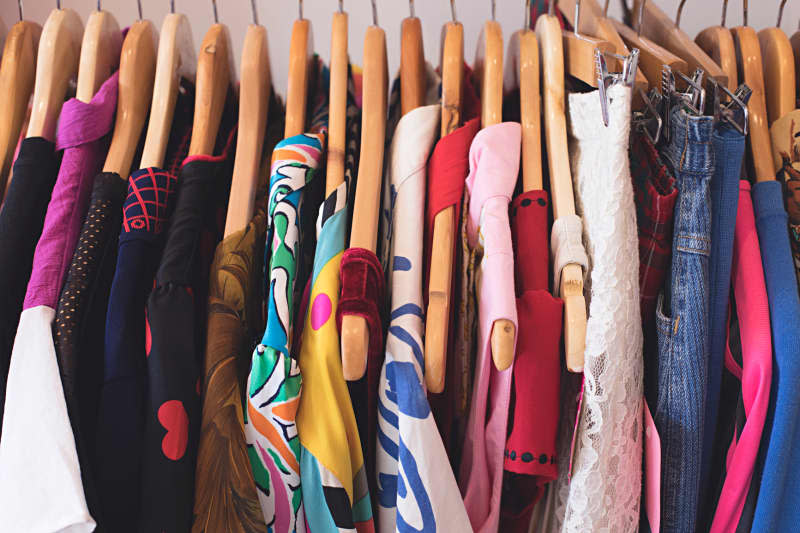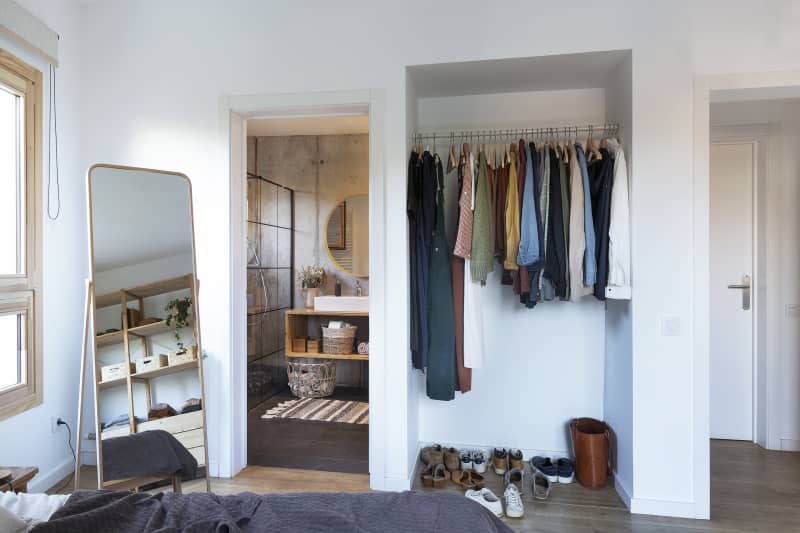I Got a Color Analysis to Figure Out My Wardrobe — But I Didn’t Expect This

I have often compared the TikTok algorithm to an episode of the early 2000s show Extreme Makeover: Home Edition in one specific way: When they made over a room, they went all in on the theme. Oh, this kid kind of likes ponies? Their whole room is now a human-sized stable. Similarly, when I like one little TikTok, suddenly my whole feed is flooded with iterations on that video. Recently, that ever-present topic has been all things color analysis — and I’m enthralled. I’m not sure this extended analogy really paid off, but you know what has? Getting my color analysis done.
If you’re unfamiliar with color analysis, it’s the practice of looking at the undertones in your skin, hair, and eyes and using color theory to choose hues that best complement your natural beauty. You might’ve heard of “color seasons,” which is shorthand for a color palette that best suits people with certain features — a “true winter,” for instance, is said to look best in cool jewel tones. After scrolling through dozens upon dozens of videos of people hashing out the differences between a “bright spring” and a “light spring,” I was still no closer to figuring out what my color palette was.
My Personal Color Analysis
I went on a trip with Buick to test out their new, colorful range of Buick Envistas, which included a color analysis with style educator Julia Dobkine, who founded her own color consultation business. To unlock my color season, Dobkine set out draping a series of fabrics across my shoulders, just below my face to see how each one either washed me out or made me pop. After checking a few different colors, she announced my new identity: Neutral-warm deep autumn. That means my best colors are the ones you’d associate with late-fall beauty, like cinnamon brown, olive green, and crimson red.
If I’m honest, I’m still working out exactly what that means for my wardrobe. I have a ton of black in my closet, as well as lots of pale pink, light purple, and other hues that are “the worst” for a deep autumn like me. But the most significant — and unexpected — effect of my newfound color identity so far has been how much it’s helped curb my impulse buying tendencies.

How My Color Analysis Is Saving Me Money
I was almost nervous to have my seasonal colors analysis done because I pictured the results turning my whole closet on its head — it can be a great tool for decluttering, after all — and having to go out and start fresh. But that hasn’t been the case, and in fact I’ve found myself spending less on clothes in a few surprising ways.
I’m not overhauling my whole closet.
When I talked to Dobkine, she said she doesn’t encourage a giant wardrobe renovation at all. “When you get your colors you literally get a new language. So now you know the letters, but it’s going to take you a few years to build a full wardrobe,” she says. “I don’t encourage my clients to do a giant closet purge because you already have what you have, so you might as well continue using it.”
Instead, she says, she encourages clients to start buying only clothing in their color palette from now on. “Because with your palette, you can build a long-term, efficient, and sustainable wardrobe for many years to come, and you know that everything will complement you and everything can be styled into an outfit because all colors are within the palette.”
I’m not making emotional purchases.
A few weeks ago, I was in the thrift store on my block, thumbing through a rack of bright red sweaters. I wanted something that would make me feel bold, plus Valentine’s Day was coming up, and it felt like a festive purchase. But after picking up a hanger, I thought about my color analysis and decided to put it down. Not just because it wasn’t in my palette, but also because I was thinking of buying it for reasons that wouldn’t last. Although it was only $20, I would inevitably wear it once or twice, then watch it take up unnecessary space in my one closet and likely donate it in a year or two, feeling some serious decluttering guilt.
Dobkine says emotions and colors are so closely related; people shop this way all the time without realizing it. “We are not always aware of all the emotions we go through throughout the day. Like, you wake up in a good mood, right? And then you get some bad news, so your mood goes down. And then you get a coffee and your mood goes back up,” she explains. “So if you’re shopping for clothes at this particular time, you’ll most likely get yourself something that will resonate with or elevate your current mood.”
The problem with that approach, she says, is when this feeling has passed a few hours or weeks later, you might not feel the same way about that item. That’s when you find yourself looking in your closet wondering why you bought that shirt with the tag still attached. “My ideology is you should separate your emotions from your style,” Dobkine says. Having this new toolset has helped think about why I’m really gravitating toward a piece of clothing before I buy it. And just taking that extra minute has saved me from making a surprising number of purchases already.
I’m building a wardrobe that will last.
Thanks to my mom, I’ve always been a big advocate of calculating the cost-per-wear for an item, meaning an expensive pair of jeans can be worth it when I realize that I’ll wear them every week, while that single-wear dress might not merit the steep price tag. Having my color analysis done has underscored that mentality even more by adding an extra layer to my decision making, and Dobkine says she’s heard the same feedback from her clients. “They start buying less, but they wear those pieces more,” she says, noting they tend to stray away from passing trends and fast fashion that won’t last as long.
“They invest into better quality and create capsule wardrobe,” she says. Although I’ve only known my color season for a few short months, I’m already looking forward to slowly and sustainably paring down my closet until it’s only filled with pieces that make me feel my best year after year.

